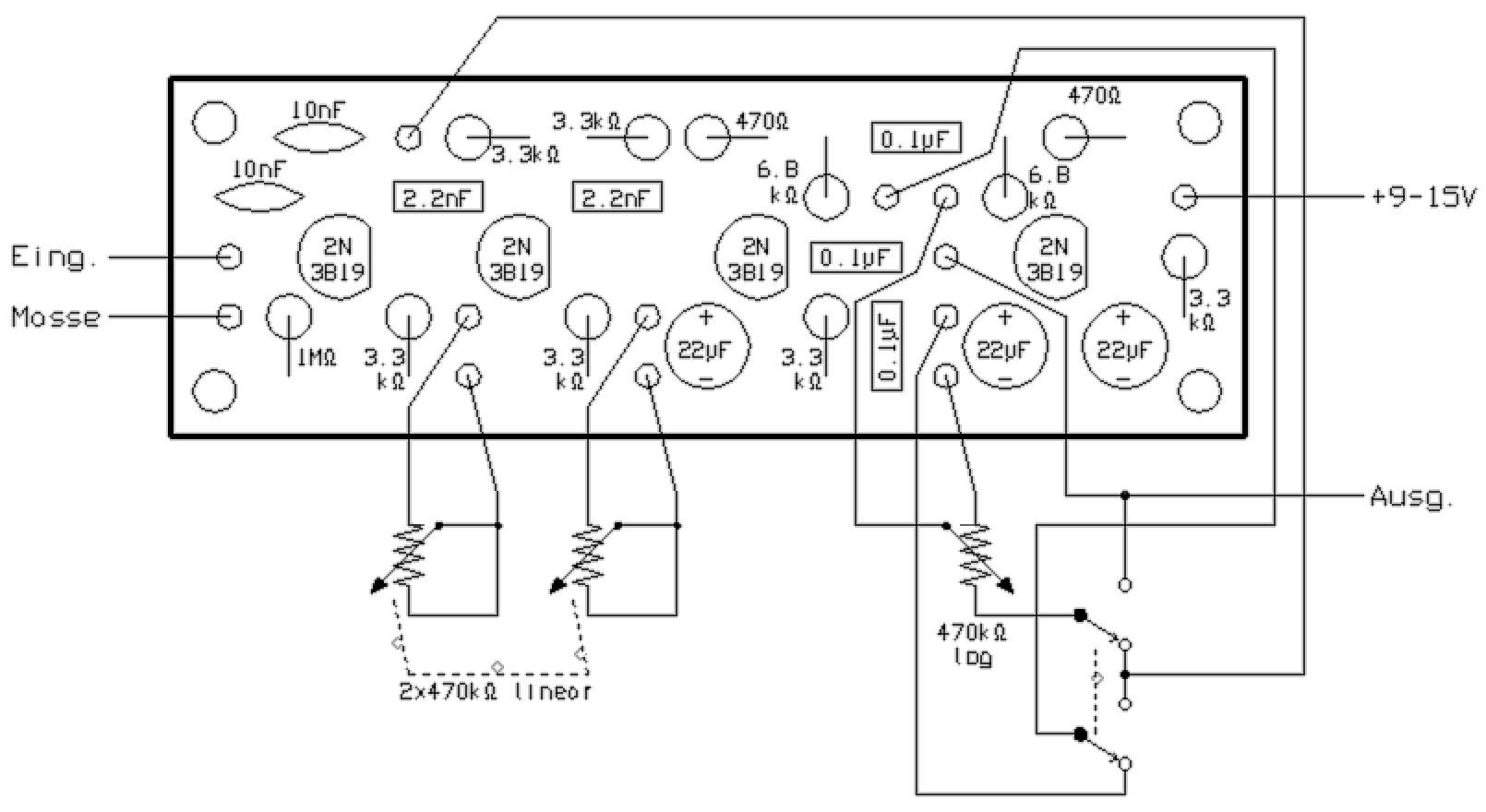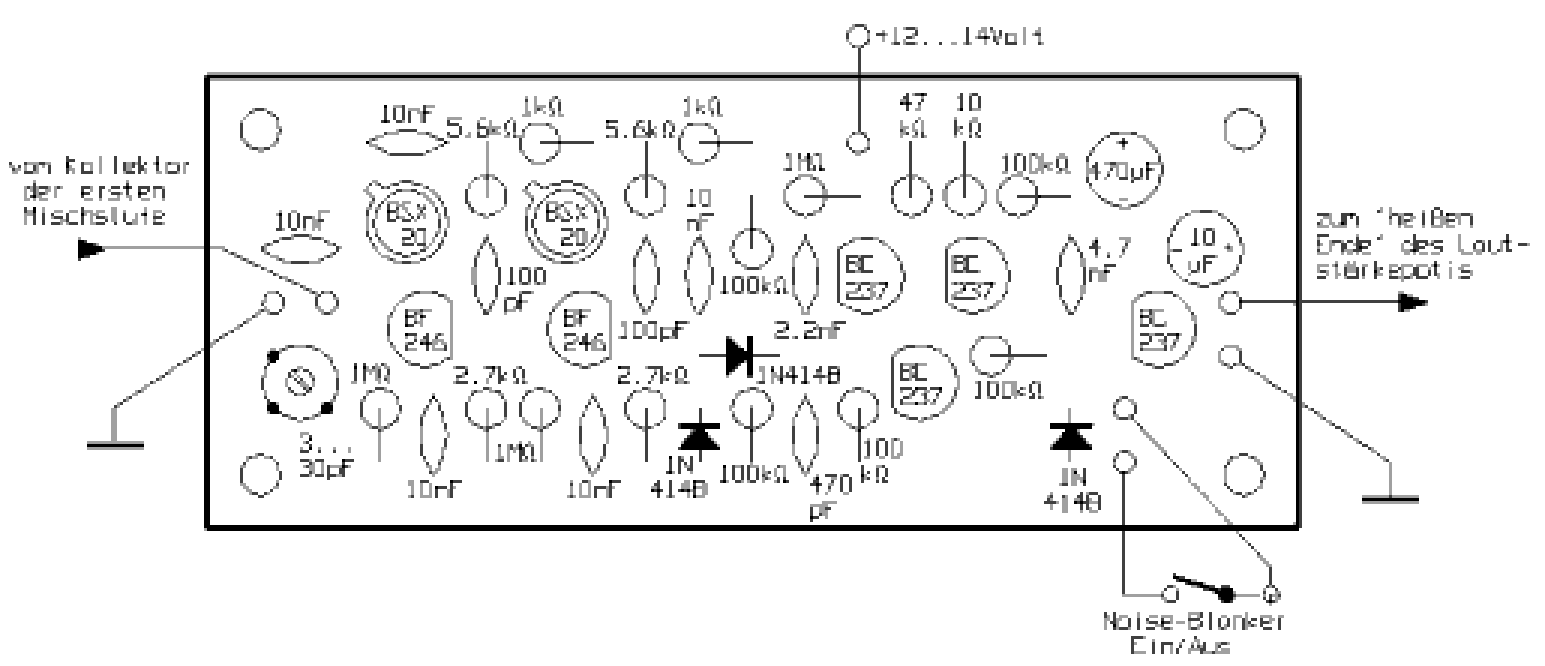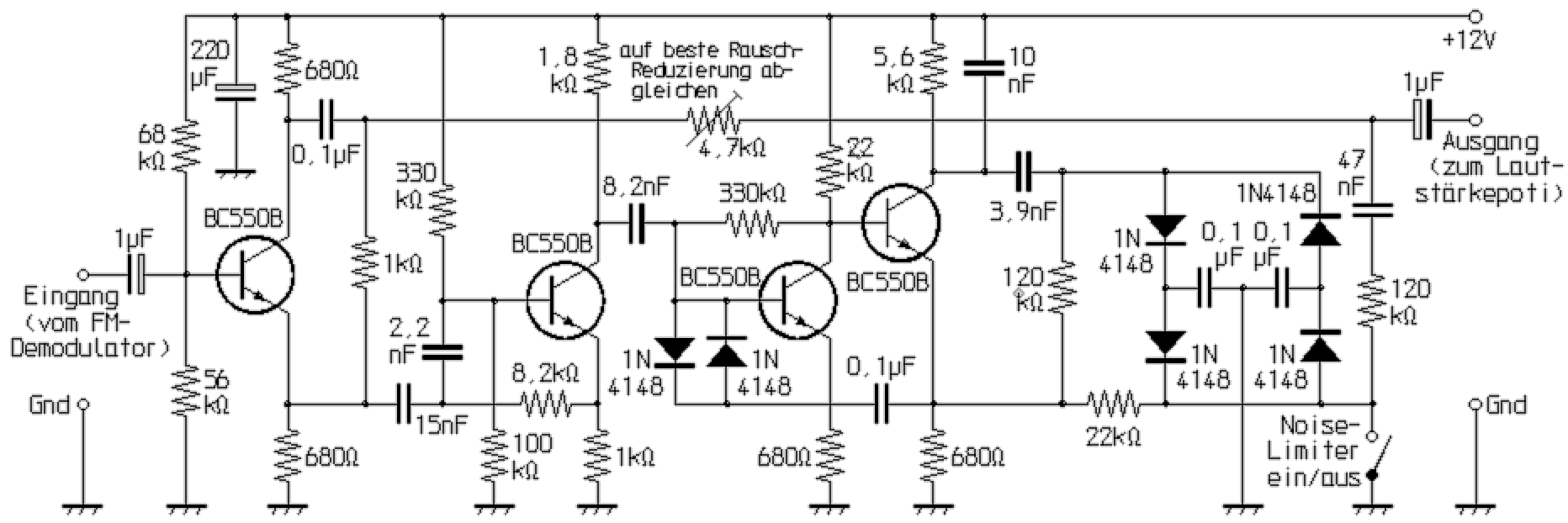Various circuits to reduce interferences
A CW / notch filter with field effect transistors

Here is a circuit that can be used depending on the switch position as NF-selective filter or notch filter. This arrangement known in tube technology under the name "Selectoject" here were transferred to FET circuit technology. So this circuit as well is suitable to select out or supress a frequency.

In the former case, e.g. the undisturbed reception of the Morse code of a telegraphy station is possible. In the other position, e.g. an interference tone can be suppressed so that an almost interference-free reception can be achieved. The audio frequency to be boosted or rejected is set using the tandem potentiometer. With the other potentiometer, the effect can be adjusted to optimum.

A 'Noise Blanker' (NB) for blanking out interference signals
A noise blanker eliminates impulse noise during AM or SSB operation. Such may be caused by automotive ignition systems, home appliances with bad Interference suppression, but also by atmospheric influences (e.g., thunderstorms). Not infrequently, the volume of the resulting crackle and patter noise is significantly louder, as the received stations. Susceptibility to such impulse noise is often cited as a major disadvantage of AM. But even at SSB they can reach an unbearable level.

The noise-blanker circuit described below can be relatively easily replicated using cheap components. In contrast to previously often described circuits, which worked in many cases only as noise limiter, this is a true noise-blanker circuit. It completely blanks glitches by temporarily completely blocking reception while the interference occurs. As a result, the temporally severely limited disturbances are barely heard by our ear. The extremely short switch-off phases are scarcely noticeable acoustically. The circuit is suitable for retrofitting simple devices in which such a feature is not available.

The input of the circuit obtains its signal from the output of the preferably first mixer stage of the receiver. It is suitable e.g. for devices with an IF of 9 MHz or 10.7 MHz. With the trimmer at the circuit input, the noise blanker is adapted to the existing IF. It is to adjust for best suppression effect. The circuit must be placed in the device so that the connection line from the mixer is as short as possible. With the switch the noise blanker can be switched off. The off position results when the switch is closed.

Modified DNL circuit for noise reduction in communication radio
The squelch in almost every radio suppresses noise as long as no stations are being received. In contrast, Dynamic Noise Limiter (DNL) reduces background noise when receiving weaker stations. The originally intended for Kasettendecks circuit was adapted to the narrower frequency range in the radio.

The circuit can be connected directly to the AF output of common FM demodulators. If necessary, a level adjustment can improve the results even more.
